Here’s our beginner’s guide to pool maintenance, chock full of tips on how to care for your pool.
Let’s say you want your pool water to remain crystal clear, pristine, and inviting. In that case, you’re going to need to perform regularly scheduled maintenance. This will also decrease the risk of bacterial contamination, which can be a significant health risk. Here are the three Cs of pool care:
- Circulation
- Cleaning
- Chemistry

Let’s dive in!
Circulation
The most critical part of a pool maintenance routine is ensuring that your pool water is circulating properly. The pool pump does this and is the beating heart of your pool’s circulation system.
This hard-working component sucks in water and sends it through the filters, where dirt and other impurities are removed. Clean water is then returned to your pool, and you get to enjoy yet another day of swimming fun.
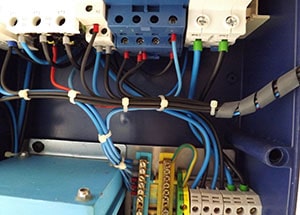
The more your pump runs, the cleaner your water will be. Ideally, your pump should run around the clock. However, this can get expensive.
In colder climates, you can probably get away with running your pump four to six hours every day. On sweltering summer days when the pool is in constant use, run your pump for at least 12 hours each day. If a variable speed pump powers your pool setup, you could run it at a lower speed without incurring a sky-high electric bill.
Ideally, you should have a pump with a timer. If you don’t, consider investing in one. That way, you won’t have to continually switch it on and off yourself, saving you time and headaches.
Clean Your Filters
Diatomaceous earth (DE), cartridge, and sand are the three different kinds of pool filters. All require periodic cleaning.
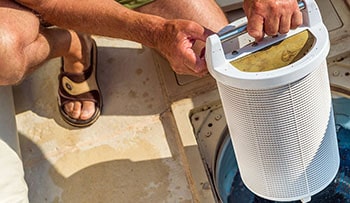
However, don’t clean the filter more often than is recommended because (believe it or not) a clean filter isn’t as efficient as one with a small amount of dirt in it. A tiny quantity of dirt in a filter helps trap other contaminants.
On the other hand, don’t let the filter get too filthy. If you notice an increase of between five to 10 psi in pressure, or if your circulation drops precipitously, it’s probably time to clean it.
If your pool water is cloudy or tinted, that’s another sign you should probably do it.
Backwashing Your Sand Filtration System
If your pool has a sand filter, you’re going to need to regularly backwash it. This means reversing the water flow through the filter, so built-up contaminants and dirty water get shunted to the waste port. If your pump gauge is 10 psi or more than its normal reading, it’s time to backwash.
Clean Out Baskets
For your pool to remain clean, the water must be adequately filtered. If water flow is being impeded by a basket full of debris, that won’t happen. That’s why you need to clean out your skimmer and pump baskets once or twice a week.
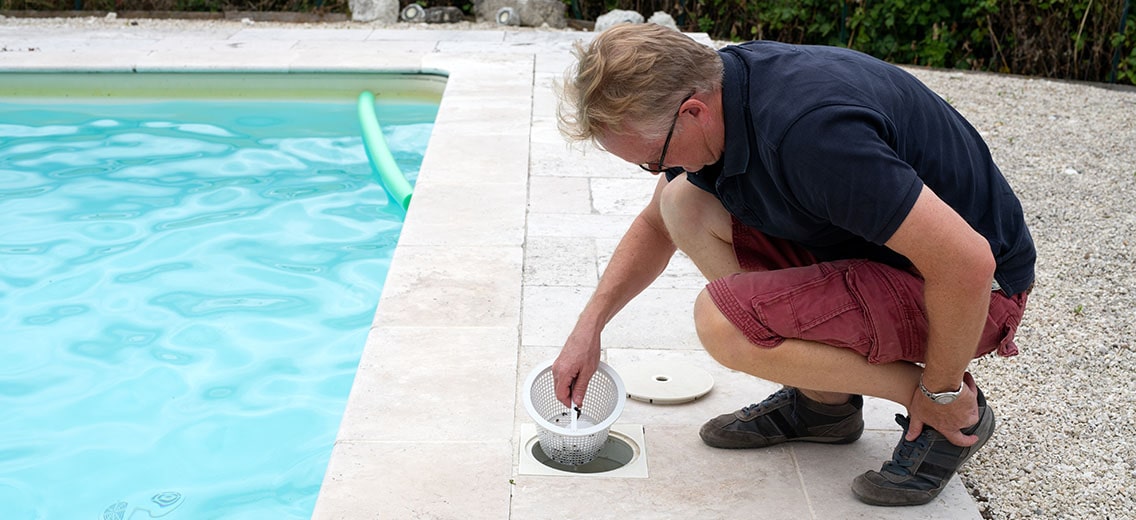
Also, by regularly cleaning your basket out, you won’t overwork your pump, which increases its useful life. You also won’t need to use as much chlorine. A pump basket usually has a clear lid, making it easy to check if it’s full. If it is full, remove it and shake it out. Spray the inside of the basket with a hose to dislodge stubborn debris.
Skimming
When floating debris sinks, it’s more challenging to get out of the water. Also, when it reaches the bottom, it can leave hard-to-remove stains.
One of the easiest ways to keep your pool sparkling clean is to skim your pool’s surface once every couple of days. Use a hand skimmer to remove insects, leaves, and other free-floating junk from your pool’s surface.
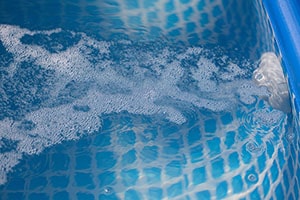
Angle Water Jets
Keep your pool jets always pointing away from your skimmer. This way, your water continually moves in a circle, making it easier for the skimmer to get rid of floating junk.
It also helps to angle the jets downward, so the water at the bottom of the pool gets circulated. Make sure there’s circulation around the steps, ladder, and every crevice and corner.
Cleaning
Trim Back Trees
If there are lots of trees encircling your pool, you might want to think about trimming them back. That way, you won’t have as much debris falling in the water. Besides, falling tree branches could cause expensive damage to your pool.
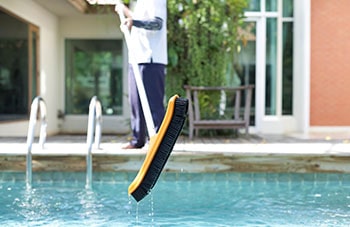
Scrubbing
By scrubbing pool walls with a brush, you’ll prevent unsightly algae, stains, and calcium deposits from building up. This is crucial in areas where water flow is poor, such as around ladders, steps, and crevices.
The kind of material your pool is built from will dictate the tools you use. For plaster-lined pools, use a stiff brush. If you have fiberglass, tile, or vinyl walls, choose a softer one to help prevent scratching and grout damage.
The Tennis Ball and Pantyhose Tricks
To absorb surface oils left behind by cosmetics and tanning lotion, throw a couple of tennis balls into your skimmer basket. You can also wrap the baskets in pantyhose to create an extra-fine filter that’ll capture more impurities than a skimmer alone. When the pantyhose and tennis balls show signs of wear, replace them.
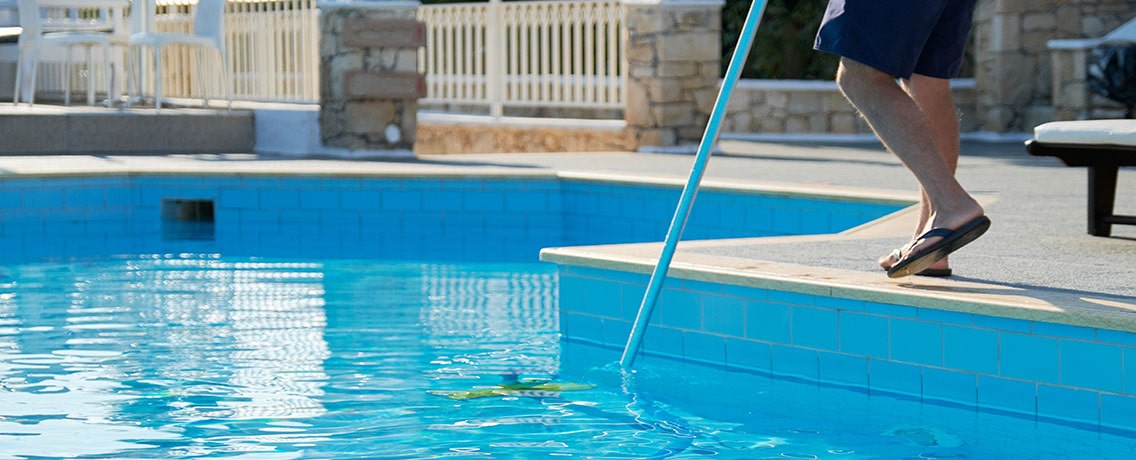
Vacuuming your pool once weekly removes debris that can clog your filtration system. There are different types of pool vacuums. If you have a manual one, work it back and forth all over the pool’s surfaces just like you’re vacuuming a carpet. Make sure you slightly overlap each stroke and check the filter every time you use it.
Chemistry
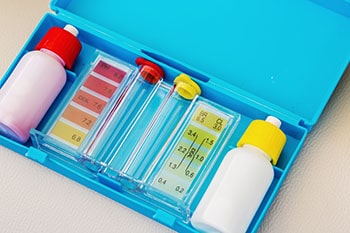
A water testing kit is an essential component of your pool cleaning arsenal. This can be a reagent or test strip kit, either of which you can purchase at any pool supply store.
A reagent kit is where you take a pool water sample and add either a tablet or liquid to it. The water changes color, showing you if it’s balanced.
If you have a test strip kit, submerge the strip in the pool for a few seconds. Dyes on the strip change color to show the levels of the various chemical compounds present in your pool water. You should test your water weekly.
Here’s what to test for:
pH
pH is how acidic or basic your water is. Low pH levels mean the water’s acidic, while high levels mean it’s too alkaline. Out-of-whack pH levels can cause all kinds of problems, including algae blooms and equipment corrosion.
The ideal range is 7.4 to 7.6. While high alkalinity can often go down by itself given enough time, you risk pool surfaces, filters, and circulation systems getting damaged. One inexpensive way to lower pH levels is with muriatic acid.
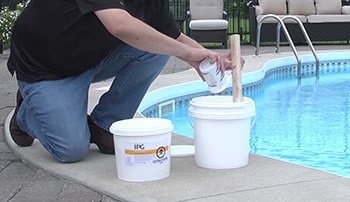
Calcium Hardness
The optimal calcium hardness range is between 200 and 400 ppm (parts per million). Water with low calcium hardness will aggressively leech calcium from every surface it comes into contact with. This includes concrete decking, plaster, and grout.
If it’s too high, calcium deposits will build up on pool surfaces.
Alkalinity
Alkalinity works as a pH buffer, helping to avoid massive spikes in acidity or basicity. This won’t happen if it’s between 100 and 150 ppm. If it’s below this range, pool surfaces will be more prone to staining. If it’s too high, your water can become cloudy.
Use baking soda to boost your pool’s alkalinity level.
Chlorine
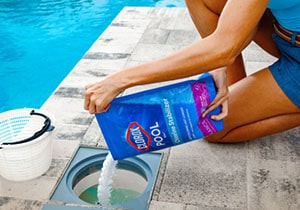
Chlorine is a chemical sanitizer that comes in powder, tablet, and liquid forms. It annihilates disease-carrying microorganisms such as cholera, hepatitis A, and dysentery. It also controls algae spread.
Once you add chlorine to your water, hydrochloric acid is formed. This compound kills bacteria, viruses, and other microscopic threats by combining with them. This combined chlorine is known as chloramine.
This reaction works best when the pH levels are within a specific range. So, when you’re using chlorine, keep an eye on the pH levels. Sunlight speeds up this chemical reaction, so you’ll go through more chlorine if your pool gets a lot of sun.
Phosphates
Phosphates are chemical compounds that contain phosphorus, which is a naturally occurring, non-metal element. High phosphate levels can cause algae to proliferate, causing your water to look green and cloudy.
Adding Chemicals
Once you know the precise chemical levels in your pool, you can add what you need to restore optimal balance. Closely follow the package directions for each chemical, including knowing what each one does and how it affects the water.
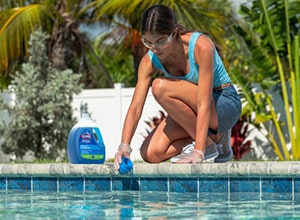
Shocking Your Pool
Sometimes, chlorine present in pool water needs a boost because it doesn’t have enough sanitation power. This could be because a torrential rainstorm dumped lots of water in your pool or right after a pool party. These kinds of things can overload your pool with potential pathogens, and your normal chlorine levels won’t be able to deal with all of them.
The sanitation boost comes in the form of shocking your pool, which is adding high levels of chlorine to break apart chloramines. This will quickly raise chlorine levels to kill algae, bacteria, or harmful microorganisms. Shock your pool after massive storms, when there’s a spill or other unexpected contamination, and right after an algae breakout.
It’s always best to do your pool shocking at night. That’s when swimmers are done for the day, allowing the pool shock to bring the sanitation back to acceptable levels without interference.
Create a Maintenance Schedule

Once the summer season is underway, pool maintenance can be an overwhelming burden—even for the most industrious of individuals.
That’s why you need to create a pool maintenance schedule. This is also a great way to share the workload with other household members.
That way, you’ll stay organized and essential tasks won’t fall by the wayside. Once you have your pool maintenance schedule written down, tape it up somewhere near your pool. Encourage other household members to write down their names next to tasks so you won’t have to do everything.
Check and Maintain Water Level
Water will invariably be lost throughout the swimming season because of evaporation and all the splashing that goes when people have fun in the water. Regularly check the water level to ensure it doesn’t fall below the level of the skimmer.
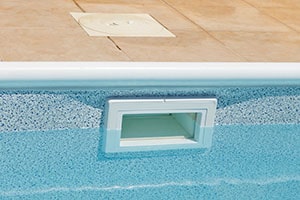
If it does, the skimmer won’t be able to do its job. Even worse, the pump could get damaged. If the water level needs to be increased, use a garden hose to bring it back to normal.
However, elevated water levels can also cause problems, such as causing the skimmer to stop working. You can drain water that’s too high by using the “WASTE” setting on the multiport valve. This setting will divert water so that it goes to the backwash hose.
Never leave the pool unattended when draining water because removing too much is worse than not draining any at all.
Find and Repair Leaks
It can be challenging to determine if low water levels are due to normal evaporation or because your pool has sprung a leak. A low-tech bucket test can help you determine which one it is. To conduct this test, fill a plastic bucket three-quarters full. Mark the waterline with a waterproof magic marker on the inside of the bucket.
Place the bucket in the pool, and then mark the water line on the outside. Allow it to float freely for four days or so. If the water both inside and outside of the container has gone down by the same amount, your pool is losing H2O due to evaporation.
However, if your pool water level has decreased more than the bucket water level, your pool has a leak. This means you should call a pool professional ASAP to have it repaired.
Winterizing Your Pool
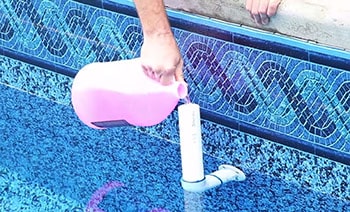
If you experience subzero temperatures in your neck of the woods during the cooler months, you’ll need to winterize your pool. That’s because pool water left in pipes can freeze, causing costly damage.
To prevent this, use an air compressor to blow the water out of the pipes when the swimming season ends. Then, add some non-toxic antifreeze to the lines. This is a totally different chemical from automotive antifreeze. Installing threaded winter plugs in the pipes will also help keep water out of them.
Disconnect the pump, heater, and chemical feeders. Brush the walls, vacuum the pool, empty skimmer baskets, close the skimmer line valve, and decrease the water amount to approximately 18 inches below the coping. Don’t completely drain your pool because hydrostatic pressure can damage it if you do.
Lastly, shock your pool and throw a winter cover over it to keep out debris.
Opening Your Pool
If you maintain your pool year-round, you’ll save yourself some time and energy when it’s time to open it. Don’t take the cover off until you’ve cleaned the area around the pool. Sweep debris away or blast it from the immediate vicinity with a garden hose or a pressure washer. If you need help on how to choose a good pressure washer, check out our guide.
Fill your pool to its normal level. Then, reconnect everything you disconnected. Because water needs to flow through the circulation system, open the skimmer line valve. Test the water to see what chemicals you’ll need to add. Then, shock the pool.
Conclusion
If you do the things this article recommends, you can maintain a crystal-clear pool no matter what the season. The important thing is to establish a maintenance routine and then stick to it.
What tip did you find most helpful? Let us know in the comments!

Pool Maintenance Tips & Tricks
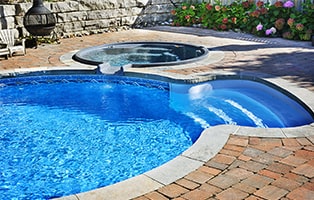

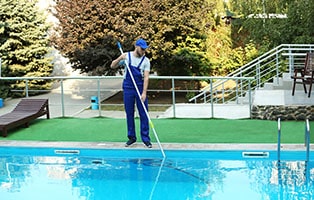
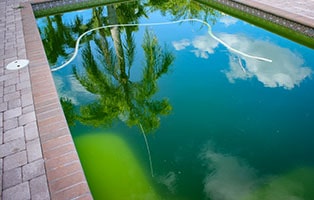
“Pool maintenance includes how to keep the water clean from contaniments and layers of waste that is frozen on the surface of the pool.
Various tools are used for cleaning, thank you for the article.”